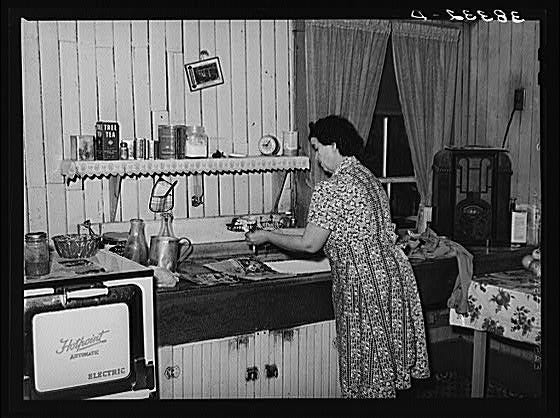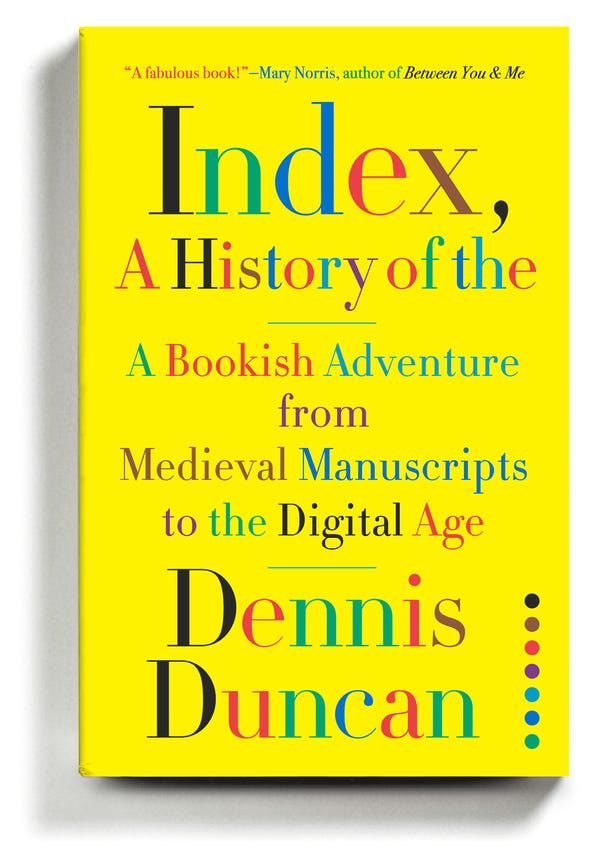Gadgets, Electronic: Electronic Numerical Integrator and Calculator
. . . a team at the University of Pennsylvania was hard at work on the first electronic computer (the “electronic numerical integrator and calculator,” or ENIAC), thereby hastening the eventual obsolescence of the slide rule, . . .
Herb ’n’ Lorna, Chapter 15
ENIAC (/ˈɛniæk/; Electronic Numerical Integrator and Computer) was the first programmable, electronic, general-purpose digital computer, completed in 1945. There were other computers that had these features, but the ENIAC had all of them in one package. It was Turing-complete and able to solve “a large class of numerical problems” through reprogramming. Although ENIAC was designed and primarily used to calculate artillery firing tables for the United States Army’s Ballistic Research Laboratory (which later became a part of the Army Research Laboratory), its first program was a study of the feasibility of the thermonuclear weapon. ENIAC was completed in 1945 and first put to work for practical purposes on December 10, 1945.

Literature: Popular, MassMarket: Radio Drama (“Soap Opera”): Fictional
Lorna was alone in the kitchen, whipping up a batch of potato salad and listening to The Loves of Ellen Burch on the radio.
Herb ’n’ Lorna, Chapter 15
The Loves of Ellen Burch is, as far as I can determine, a fictional radio drama, a mild parody of the “soap opera.” It does not appear in Wikipedia’s list of actual radio soap operas.
Created with the American housewife in mind, radio soap operas, also known as “washboard weepers,” were sponsored by manufacturers of household products like facial soap or soap powders and broadcast during the daytime. From the mid-1930s until the mid-1950s, it is estimated that about 50 percent of American women were active listeners.
James Lawrence Fly, Chairman of the Federal Communications Commission, took a dim view of the weepers. In 1943, the Pittsburgh Post-Gazette quoted him as saying that they “… filled the long daylight hours with highly emotional, cheap forms of droolery.” [What’s droolery? MD]
During the 1930s, the themes of many radio soap operas appealed to listeners struggling to get by during the Great Depression. In “Betty and Bob” (1932), for example, a young married couple, disinherited by the husband’s millionaire father, is forced to work and save (you can listen to it online here). [The link takes you to the website of the Old Time Radio Catalog. MD] Likewise, in “Marie, the Little French Princess” (1933), a wealthy young woman of nobility finds happiness in America’s working class.Kira Garcia, “‘Washboard Weepers’: Soap Operas in the Days of Radio,” The Tenement Museum

Literature: Fiction: Techniques: Concurrent Narrative Threads, Cliffhangers
Dudley appeared at the back door, tapping on the window, fogging the glass with his breath. …
An organ crescendo came from the radio. Ellen Burch, a young girl with dreams, had arrived at an important fork in her young life just as Dudley had arrived at the back door. Lorna wondered whether she had decided to travel to Patagonia with the darkly intriguing Reynaldo or stay in Beaverton with Dave. Two actors portraying the Bullard Brothers began an advertisement for Bullard Brothers’ Double-Roasted Coffee. “It’s roasted,” said the first. “And roasted again,” said the second. “For twice the coffee flavor,” they said together. “So your second cup is almost as good as your first.”
“Do you want some coffee, Dudley?” asked Lorna.
“Yes, thank you, that would be nice,” said Dudley. …
Lorna poured coffee for Dudley. …
“Now I have something shocking to say, Lorna.”Herb ’n’ Lorna, Chapter 15
Soap opera storylines run concurrently, intersect and lead into further developments. An individual episode of a soap opera will generally switch between several concurrent narrative threads that may at times interconnect and affect one another or may run entirely independent to each other. Episodes may feature some of the show's current storylines, but not always all of them. Especially in daytime serials and those that are broadcast each weekday, there is some rotation of both storyline and actors so any given storyline or actor will appear in some but usually not all of a week’s worth of episodes. Soap operas rarely conclude all the current storylines at the same time. When one storyline ends, there are several other story threads at differing stages of development. Soap opera episodes typically end on some sort of cliffhanger …
See also: Gadgets, Electronic TG 83; TG 84; Cliffhangers TG 84; Cliffhanger, Frustration TG 160
Just out, and just added to my must-read list (of course):
A Smart, Playful Book About the Underappreciated Index
Dennis Duncan’s entertaining and informative “Index, A History of the” moves from the 13th-century origins of the form to the world of digital search engines.
Have you missed an episode or two or several?
You can begin reading at the beginning or you can catch up by visiting the archive or consulting the index to the Topical Guide.
You can listen to the episodes on the Personal History podcast. Begin at the beginning or scroll through the episodes to find what you’ve missed.
You can ensure that you never miss a future issue by getting a free subscription. (You can help support the work by choosing a paid subscription instead.)
At Apple Books you can download free eBooks of “My Mother Takes a Tumble,” “Do Clams Bite?,” “Life on the Bolotomy,” “The Static of the Spheres,” “The Fox and the Clam,” “The Girl with the White Fur Muff,” “Take the Long Way Home,” “Call Me Larry,” and “The Young Tars,” the nine novellas in Little Follies, and Little Follies itself, which will give you all the novellas in one handy package.
You’ll find overviews of the entire work in An Introduction to The Personal History, Adventures, Experiences & Observations of Peter Leroy (a pdf document) and at Encyclopedia.com.




